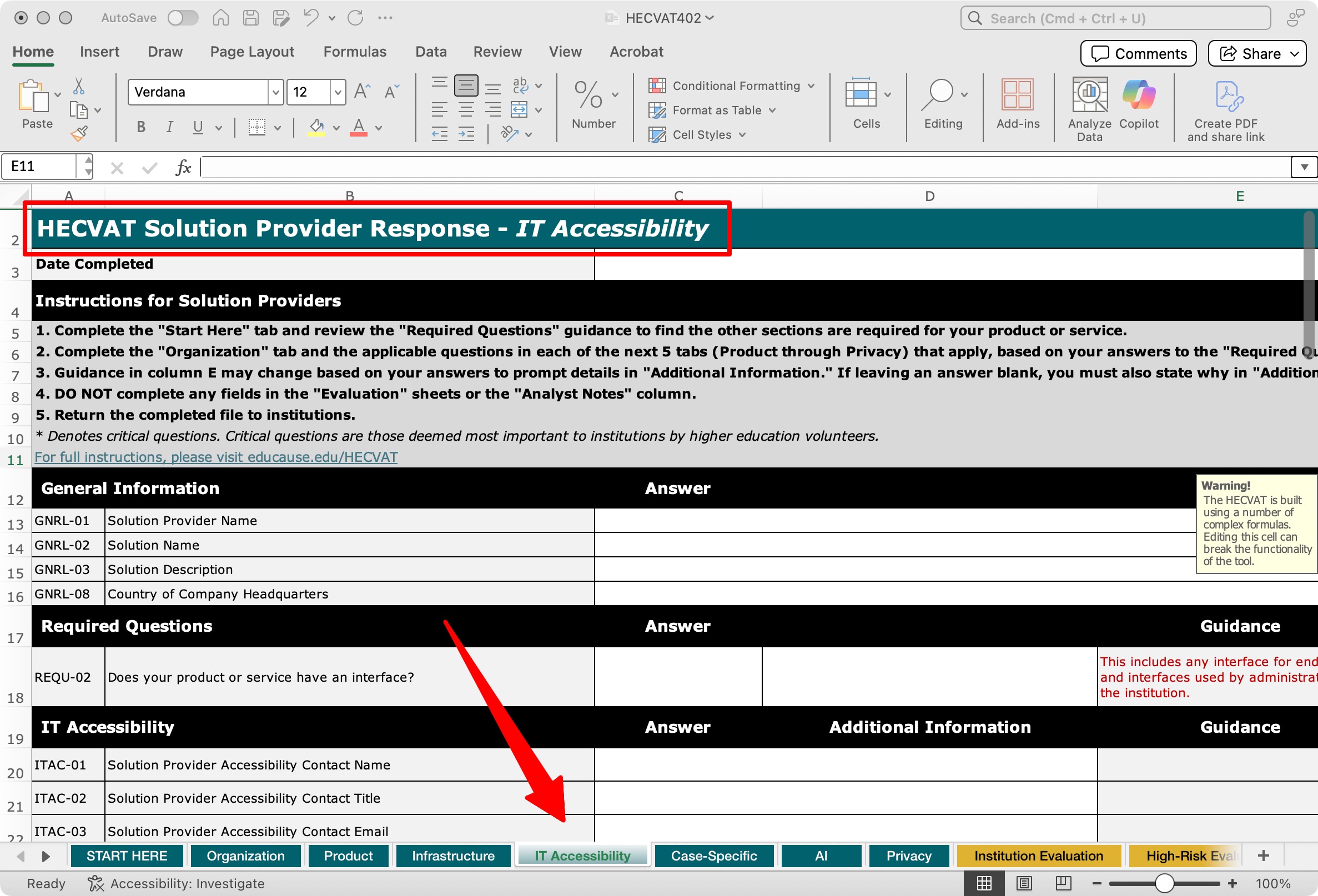If you work in higher education IT, you know the Higher Education Community Vendor Assessment Toolkit (HECVAT). It can be a heavy lift at times, but it’s essential for keeping tabs on vendor risks around security and privacy. It helps ensure the digital tools you bring into your institution meet the proper standards.
Several weeks ago, while looking through LinkedIn's latest posts, I came across a post by Kyle Shachmut, senior director of Digital Accessibility at Harvard University, in which I was delighted to read that the newest version of HECVAT now includes "excellent new accessibility benefits."
This is more than a simple update—it's a significant shift that highlights the need for inclusive digital environments in higher education.
For those in IT who have advocated for accessibility, working to make websites, applications, and learning management systems usable for all, they can now leverage a robust framework in partnerships with vendors.
So, what’s new in the HECVAT 4 for accessibility? Here are a few highlights:
Dedicated Tab
The new "IT Accessibility" tab provides a dedicated and easier-to-use table for all accessibility questions.

Built-in Accessibility Best Practices
The HECVAT remains a complex Microsoft Excel workbook. However, like other Microsoft applications, Excel supports robust accessibility best practices right in the document itself. The latest version of the HECVAT incorporates more of these practices, including "enhanced color contrast, clearly labeled tables, and simplified table layouts compared to earlier versions."
Two New Accessibility Questions
#1 (ITAC-08): Conformance with accessibility regulations
Earlier versions of the HECVAT allowed vendors to define their own technical accessibility standards, often citing outdated versions like WCAG 2.0, which no longer meet the current requirements of Title II of the ADA. The updated question now prompts vendors to specify whether they conform to WCAG 2.1 AA, the standard mandated by Title II of the ADA.#2 (ITAC-07): Accessibility in agreements
Higher education stakeholders have expressed the need for vendors to include explicit accessibility assurances and supporting documentation within procurement agreements and contracts to avoid "surprises" later on in the procurement process. This question allows vendors "indicate that they will include their commitments for accessibility in contractual agreements."
Why This Matters for Higher Education
The release of HECVAT 4 empowers IT professionals, procurement teams, and disability services offices to have more informed conversations with vendors and prioritize accessibility in their decision-making processes.
By choosing vendors committed to accessibility, higher ed can provide a more equitable and inclusive learning and working environment for all students, faculty, and staff. In addition, proactively addressing accessibility helps mitigate the risk of discrimination complaints and fosters a positive institutional reputation.
The journey towards full digital accessibility is ongoing, and HECVAT 4 provides a powerful new tool to help navigate that path.
Resources
- LinkedIn post: HECVAT 4 launched earlier this year, which includes excellent new accessibility benefits!
- Kyle Shachmut
- EDUCAUSE

